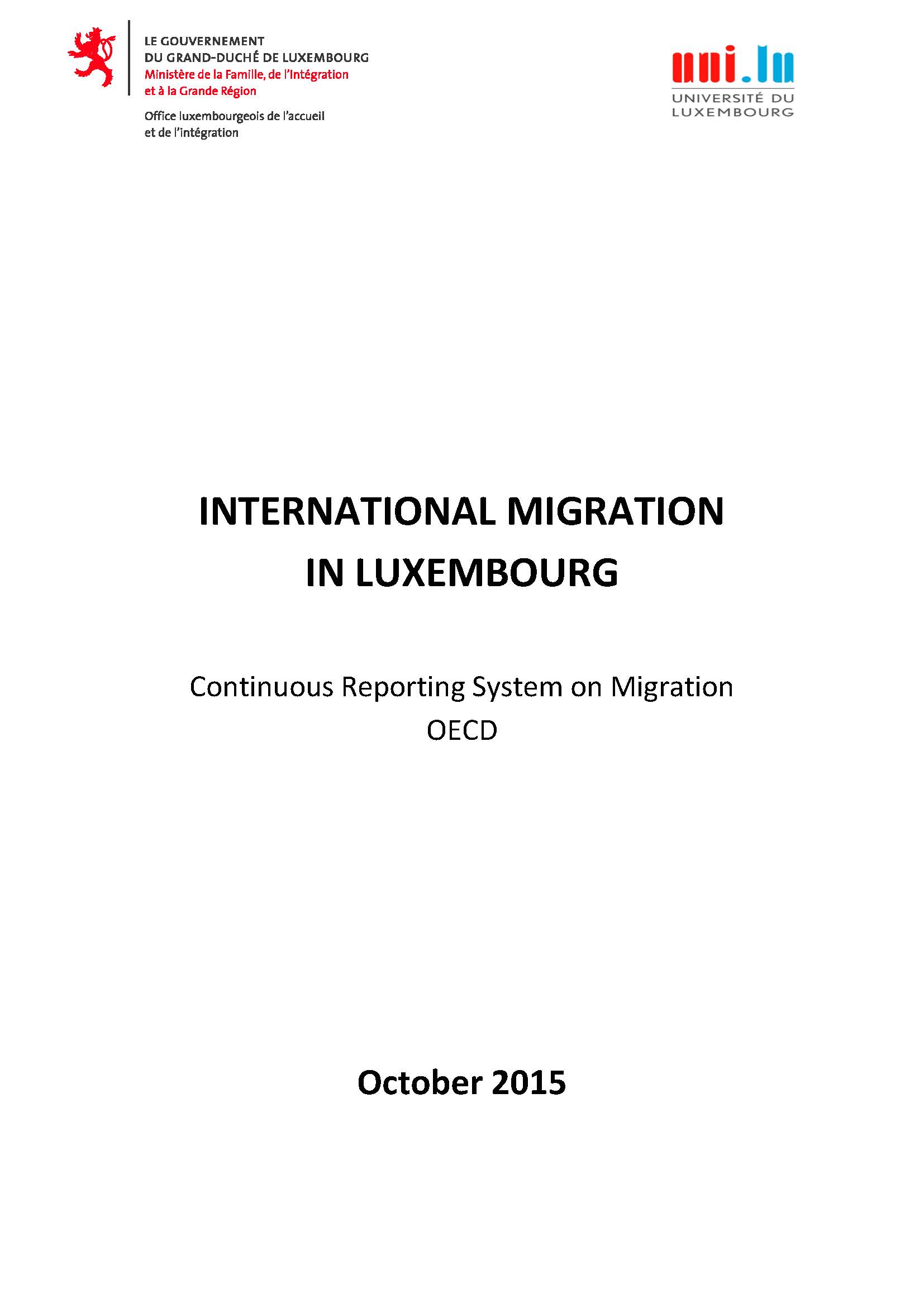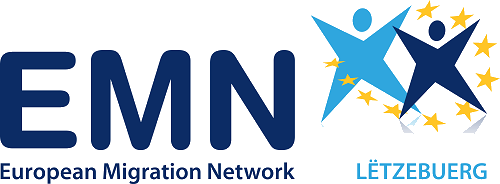Migration has always played an important role in Luxembourg’s history. In 2014 and 2015, due to the refugee crisis, migration became the focus of the economic, social and political debates, in particular during Luxembourg’s Presidency of the Council of the European Union.
As a country that is a founding Member of the European Union and located at the centre of the EU, Luxembourg has a strong attraction for EU citizens and this – in turn – has a direct incidence on the demographic composition of the country and the workforce.
Luxembourg’s demographic composition reflects its migratory diversity. Based on the reference period 2005-2014, Luxembourg recorded its highest number of births in 2013, with 2014 showing a slight decrease (from 6.115 in 2013 to 6.070 in 2014). The increase in the number of births is due to Non-Luxembourgish births. Indeed, foreigners contributed the most to the natural increase of the population in 2014.
In 2014, the net migration balance was positive having increased by 6.8% in comparison to 2013. As such, the country’s rising population numbers were mainly attributed to the immigration of individuals coming from EU Member States and other European countries. These numbers include European Union (EU), European economic area (EEA) citizens and third-country nationals from non-EU European countries.
The migratory balance amounted to + 11.000 people in 2014, which signifies a surplus of arrivals over departures. The major part of this net migration was based on the settlement of French nationals, followed by the Portuguese, Italians, Belgians, Spanish and Germans. Thus, the migratory surplus came mainly from European countries. The migratory surplus from the French surpassed that of the Portuguese for the first time since 2001. Third-country nationals’ numbers also increased, with the main nationalities being Montenegrin, Cape Verdean and Chinese. The highest progression was however registered for Syrian nationals (+244.2%).
Naturalisations also experienced an increase in the studied period where Belgians remain the top nationality to be granted the Luxembourg citizenship, followed by the Portuguese and the French. For third-country nationals, the top three nationalities are Montenegrin, Serbian and US-American.
The country’s diversity is equally reflected in its labour market which heavily relies on its foreign workforce. In fact, Luxembourgish citizens represented 31% of the workforce in 2014, while EU citizens reached 65% and third-country nationals only 4%. Cross border workers also represented a very important part of the Luxembourgish workforce with 44.4 %. For the reference period of 2013-2014, the main branches of activity of European Union citizens were work in construction (mainly Portuguese citizens), financial activities and trade, car and motorcycle repairs. On the contrary, non-EU European salaried workers were mainly engaged in the following economic sectors: hotel and catering (HORECA), trade, car and motorcycle repairs, construction and administrative and support services. There was an increase in all the economic sectors for non-EU salaried resident workers.
The entrance of third-country nationals into the country is subject to an authorisation of stay. In 2014, a decrease of 18.5% was experienced for the total issuances of first residence permits. Nevertheless, there was an increase in several categories, mainly those regarding students and intra-corporate transferees. For the new arrivals, the main reasons for migrating to Luxembourg were family reunification and work as demonstrated by the granting of first residence permits: the most important categories were family member, salaried worker and European Blue Card.
Due to the refugee crisis, the number of international protection applicants increased between 2013 and 2014. As a consequence, the recognition rate of the status increased as well. On the other hand, the number of returns continued to decrease.
In order to respond to the crisis in an adequate manner, additional funds and staff for the Directorate of Immigration and the Luxembourg Reception and Integration Agency were allocated. Furthermore, Luxembourg resettled 28 refugees in April 2014 and 46 in December of the same year.
Given the magnitude of the migration crisis and the pressure on external border Member States, the EU Council took the decision to relocate 160.000 international protection applicants (European relocation scheme) who are currently in Greece and in Italy. In order to implement this decision, Luxembourg agreed to welcome 527 international protection applicants. The first group of 30 relocated individuals from Greece arrived in Luxembourg on 4 November 2015. In addition, already on 8 September 2015, Luxembourg relocated 42 refugees at the request of the German authorities. At the same time the Luxembourg Reception and Integration Agency increased its reception facilities to deal with the increasing inflow of international protection applicants. On 31 October 2015, 1.595 applications were filed, which represents an increase of 78.4% compared to October 2014.
During 2014, Luxembourg implemented several EU directives. Directive 2011/36/EU of 5 April 2011 on preventing and combating trafficking in human beings was implemented by the Law of 9 April 2014, which reinforced the rights of victims of trafficking in human beings by criminalising begging and the trafficking of children. Extensive work was undertaken to transpose Directives 2012/32/EU and 2012/33/EU of the Common European Asylum System. Two draft bills are currently within the last stages of the legislative procedure and their implementation is set to take place in 2015, after several amendments were brought to the draft bills at the end of September and October 2015.
On the national level, recent legislative changes and reforms answer to several aims, ranging from attracting certain categories of migrants to strengthening the support provided to unaccompanied minors. The creation of a new authorisation of stay for investors and the modification of certain authorisations of stay to adapt them for business managers are currently under discussion by an inter-ministerial working group, which is preparing two draft bills on these issues.
For the first time since the transposition of the Blue Card Directive, Luxembourg published the Government Council decision of 22 May 2015 establishing the bottleneck professions where the lower salary threshold for hiring highly qualified workers applies.
Luxembourg’s legislative framework for unaccompanied minors and its application are also being reviewed. Starting from 1 January 2014, the appointment of an ad-hoc administrator has become systematic for unaccompanied minors. The ad-hoc administrator assists the unaccompanied minor in the context of the asylum procedure. Due to the doubts expressed by the Administrative Court in a judgement of July 2012 regarding the reliability of the age assessment method, a reform process on this issue has also been launched.
Due to the ongoing relevance of the topic, special focus is given to the fight against illegal employment in this report. In Luxembourg, the legislative framework was not modified in recent years, as the last reform on illegal employment of foreign workers dates back to 2012 and the last measure of regularisation occurred in 2013. In this area, recent policies specifically target the fight against illegal employment of posted workers. Luxembourg has set up information campaigns in the construction sector and continues in its international collaboration efforts in cross border control actions. As a new tool to fight illegal employment, the social identification badge was introduced. It aims at making the information more readily accessible to the authorities regulating the posting of workers.
Following the anticipated elections at the end of 2013, a new government was formed, by a coalition between the Democratic Party (DP), the Socialists (LSAP) and the Greens (Déi Gréng). In their Government Programme, several legislative changes were announced and they are being implemented progressively.
In order to carry out these changes in the area of integration, an assessment of operations of the Luxembourgish Reception and Integration Agency (OLAI) was foreseen in the programme. Thus, the Minister of Family, Integration and the Greater Region commissioned an external audit of the OLAI. The resulting evaluation report includes several improvements to optimise the administration’s functioning, such as the definition of strategic objectives, the establishment of monitoring mechanisms and a clear organisational structure.
All these modifications notwithstanding, the boldest political project on a national scale that was thoroughly debated in 2014-2015 was the modernisation of the Constitution. In order to involve citizens in the decision-making process, a referendum was held on three key questions. In preparation of Luxembourg’s referendum of 7 June 2015, the most debated question concerned the voting rights for resident non-Luxembourgers. The rejection of this option by 78 % of the votes has led the government to refocus its efforts on a possible reform of the law on nationality, proposing different options to ease the conditions to obtain the Luxembourg nationality.
International Migration in Luxembourg – OECD report (not an EMN product)

